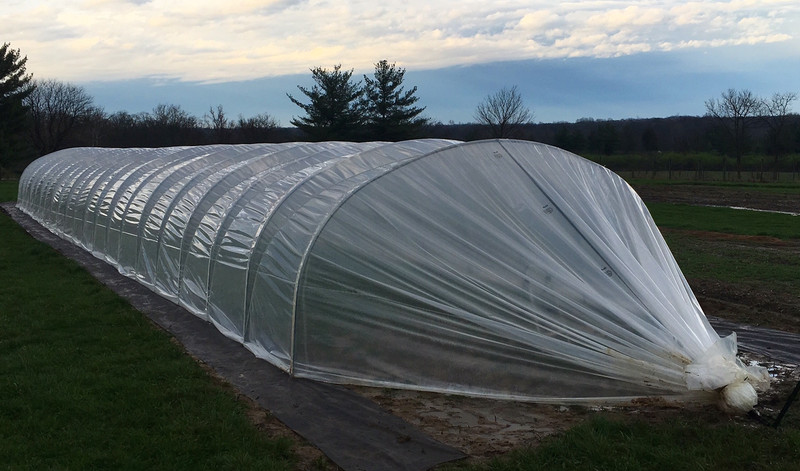Why Caterpillar Tunnels Have Become Popular Growing Structures

Caterpillar Tunnels have become more popular as a way to affordably protect crops through three seasons. Some farmers in warmer climates use these structures through all four seasons. The popularity of Caterpillar Tunnels is due to the fact that:
1) Caterpillar Tunnels are affordable; they focus on the bare minimum of what is needed to created a covered growing structure. Anchors are rebar, hoops are 1.315" Outer Diameter, and expensive hardware components required for more permanent structures, are excluded. For example, plastic is secured without the use of costly aluminum extrusions, and hoop structures are connected with strapping instead of individually expensive pieces of connecting hardware.
2) Caterpillar Tunnels are easy to install; due to its limited number of components the installation process goes much faster. Typical installation of a standard 14 ft. wide or 16 ft. wide Caterpillar Tunnel is a couple of hours with two people. As with any structure, squaring the structure and pounding in the Anchors (Caterpillar Tunnel Anchors) will take a good chunk of that estimated time.
Outside of the two reasons I list above, there are other operational and environmental benefits to owning a Caterpillar Tunnel. For example, allowing rain to wash through the tunnel interior can have huge benefits for the soil and microbial life inside, and the way Caterpillar Tunnels are covered with greenhouse plastic is ideal for periodically allowing water, sleet, snow, etc. to enter the tunnel when desired. With a traditional structure, the plastic would need to be removed completely to allow rain and snow to make its way to interior soil. Removal of plastic on a traditional tunnel is more time consuming and often increases the occurrence of irrepairably damaged greenhouse plastic
With a Caterpillar Tunnel, the plastic is not permanently secured with a wire and channel system. Instead, the plastic is held in place with ropes that attach at the base of each hoop and this rope "zig-zags" the full length of the tunnel. Downward pressure on the plastic, and tension from end to end, is what keeps the plastic on the tunnel while also allowing it to be pushed up the sides of the hoops to the very top of the tunnel. When the plastic has been pushed to the peak of the Caterpillar Tunnel some external rain can enter the tunnel which ultimately improves soil quality. When you want to cover up the structure again, simply pull the plastic along each side of the structure downward until it rests at the ground on each side once again.
An additional benefit of a Caterpillar tunnel is the ability for the tunnel to act as a shade house for summer / warm weather greens production. Since many of the high valued greens under perform (or fail altogether) in hot overly sunny conditions, covering the Caterpillar Tunnel(s) with Shade Cloth can drastically improve success rates growing greens that would otherwise fail or struggle in high temperatures.

